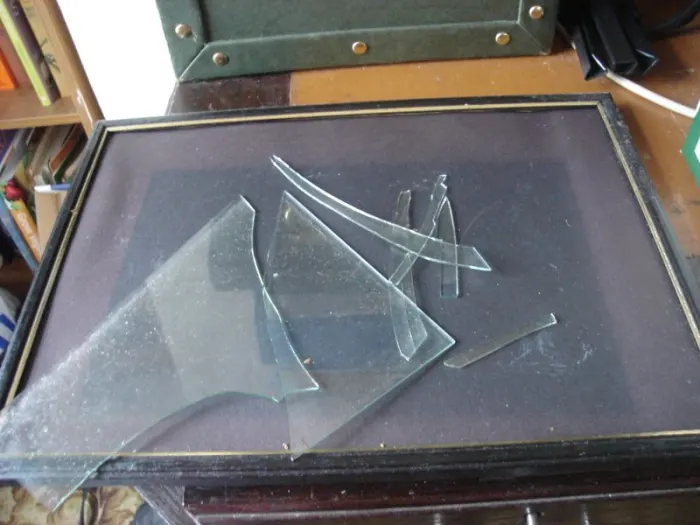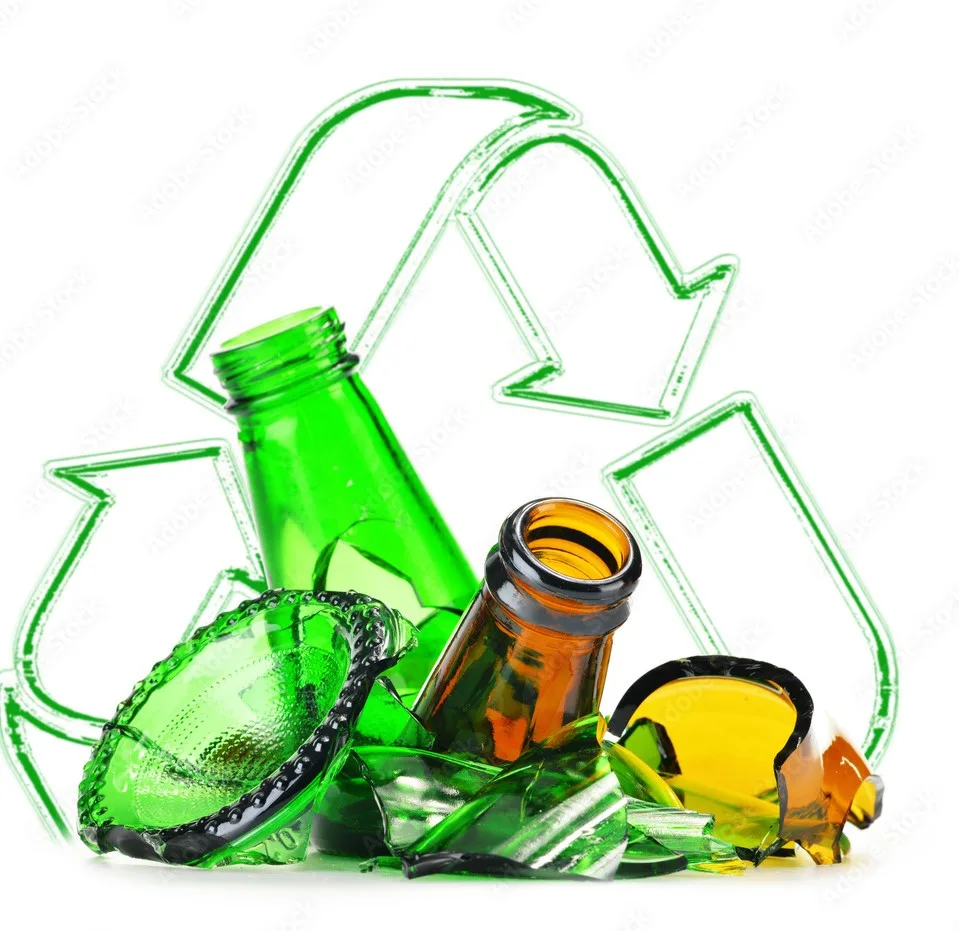How to Dispose of Broken Glass UK: Safe & Easy Steps
Imagine this: you’re tidying up after a cozy dinner party, gently washing dishes, when suddenly, a wineglass slips from your grasp, shattering into countless sharp fragments on the floor. Or perhaps, you’re rearranging your living room, accidentally knocking over a cherished picture frame, sending glass splintering across the carpet. In moments like these, the last thing on your mind might be how to dispose of broken glass safely.
How to Dispose of Broken Glass UK?
Problem: Yet, the dangers of improper glass disposal cannot be overstated. From painful cuts and injuries to environmental hazards posed by landfill accumulation, improperly disposing of broken glass can have serious consequences. Too often, broken glass ends up in household waste bins, risking injury to sanitation workers and contributing to landfill issues. It’s a scenario no one wants to encounter, but one that’s all too common.
Solution: That’s where we come in. In this comprehensive guide, we’ll walk you through the safe and eco-friendly methods for disposing of broken glass. Whether you’re dealing with a shattered vase or a broken mirror, we’ve got you covered. So, before you reach for the broom and dustpan, take a moment to learn how to properly handle and dispose of broken glass. It’s not just about cleaning up the mess—it’s about keeping yourself, others, and the planet safe.
Now, let’s delve into the steps to ensure a smooth and secure process. Let’s learn How to Dispose of Broken Glass the right way.

Safety First!
Protective Gear: When it comes to handling broken glass, safety should always be your top priority. Before you even attempt to clean up, make sure you’re properly equipped with the right protective gear. This means wearing sturdy gloves to shield your hands from sharp edges and potential cuts. Additionally, donning eye protection, such as safety glasses or goggles, is crucial to prevent any glass fragments from accidentally getting into your eyes. Remember, a little precaution can go a long way in avoiding unnecessary injuries.
Wrapping Techniques: Once you’re geared up and ready to tackle the cleanup, it’s essential to employ proper wrapping techniques for the broken glass shards. Using materials like cardboard, newspaper, or heavy-duty bags, carefully gather the glass fragments, ensuring that none are left exposed. Start by gently picking up larger pieces by hand, taking care to avoid direct contact with sharp edges. Then, use a broom and dustpan to sweep up smaller shards, being mindful not to scatter them further.
Next, it’s time to wrap the collected glass securely. Place the shards in a sturdy container, such as a cardboard box or a thick plastic bag, and layer them with ample padding to minimize the risk of breakage. Crumpled newspaper or old towels can serve as effective cushioning materials. Once the glass is securely wrapped, seal the container tightly to prevent any accidental spills or leaks.
Labeling: An often-overlooked yet crucial step in the disposal process is labeling the containers holding broken glass. Clearly mark them as “SHARP” using bold, unmistakable lettering to alert anyone who might come into contact with them. This simple yet effective labeling practice ensures that sanitation workers, recycling personnel, or anyone else handling the waste knows to exercise caution. By clearly communicating the presence of sharp objects, you’re not only safeguarding others but also facilitating safe and efficient waste management processes.
Recycling: One of the most eco-friendly options for disposing of broken glass is recycling. Depending on your location, you may have access to glass recycling facilities that accept broken glass alongside other recyclables. Glass recycling offers several benefits, including reducing the environmental impact of waste disposal and conserving natural resources by repurposing glass for new products.

Benefits of Glass Recycling: Recycling glass helps to decrease the volume of waste sent to landfills, ultimately reducing greenhouse gas emissions and conserving valuable landfill space. Additionally, recycling glass conserves raw materials and energy, as recycled glass can be used to manufacture various products, including new bottles, jars, and fiberglass insulation.
Finding Local Recycling Centers: To locate nearby glass recycling centers or facilities that accept broken glass, consider consulting a local recycling directory or relevant websites dedicated to waste management and recycling. These resources often provide comprehensive listings of recycling centers in your area, along with information on accepted materials and operating hours. By utilizing such resources, you can easily identify convenient options for responsibly recycling your broken glass.
Trash Disposal (if Recycling Not Available):
In some cases, recycling may not be a feasible option for disposing of broken glass. This could be due to various reasons, such as contaminated glass or certain types of glass that are not accepted by recycling facilities. When recycling is not available, proper trash disposal becomes necessary to ensure the safe and responsible handling of broken glass.
When Trash Disposal Is the Only Option: Trash disposal becomes the primary choice when broken glass cannot be recycled due to contamination or if it belongs to non-recyclable types. Contaminated glass, such as glass contaminated with food residue or chemicals, may not be suitable for recycling as it can compromise the recycling process. Similarly, certain types of glass, such as ceramics, window panes, and mirrors, may not be accepted by recycling facilities due to differences in composition.
Instructions for Safe Disposal in Trash: When disposing of broken glass in the trash, it’s essential to take extra precautions to prevent injuries and ensure the safety of sanitation workers and others who handle the waste. Follow these specific instructions for safe disposal:
- Double Bagging: Place the broken glass shards in a sturdy plastic bag, ensuring that there are no sharp edges protruding. To provide an additional layer of protection, double-bagging is recommended to minimize the risk of punctures or tears.
- Sturdy Container: Place the double-bagged glass shards in a sturdy container, such as a rigid cardboard box or a plastic bin with a secure lid. This helps contain the broken glass securely and prevents accidental spills or leaks during transportation.
- Secure Closure: Once the broken glass is properly contained in the double-bagged and securely placed within a container, ensure that the container is tightly sealed to prevent any glass fragments from escaping. Use strong adhesive tape or secure the lid firmly to minimize the risk of exposure.
Now that we’ve covered trash disposal, let’s explore additional tips for handling special types of glass and addressing unique disposal challenges. Let’s continue our journey of learning How to Dispose of Broken Glass responsibly and safely.
Are You Looking For How to Dispose of Kitchen Knife?
Alternatives for Disposal
Creative Reuse (Optional): While recycling and trash disposal are the primary methods for handling broken glass, there’s also the option of getting creative and finding ways to repurpose glass fragments for DIY projects. If you’re a crafty individual or enjoy upcycling materials, consider these creative reuse ideas for broken glass:
- Mosaic Art: Use broken glass pieces to create stunning mosaic artworks for your home or garden. Arrange the glass fragments in intricate patterns on surfaces like picture frames, tabletops, or stepping stones. With a bit of adhesive and grout, you can transform broken glass into beautiful, one-of-a-kind masterpieces.
- Jewelry Making: Turn broken glass shards into unique jewelry pieces by incorporating them into necklaces, earrings, or bracelets. Smooth the edges of the glass fragments to create smooth, wearable pieces, or leave them rough for a more rustic look. Add a touch of creativity to your accessory collection with handmade glass jewelry.
- Decorative Accents: Enhance your home decor with decorative accents crafted from broken glass. Fill glass jars or vases with colorful glass shards to create eye-catching displays. You can also embed broken glass pieces into concrete or resin to make custom coasters, paperweights, or decorative tiles.
- Garden Art: Add a whimsical touch to your outdoor space by incorporating broken glass into garden art projects. Create sparkling garden ornaments, wind chimes, or sun catchers using glass fragments suspended from wire or string. These unique creations will add visual interest and personality to your garden landscape.
Conclusion
In conclusion, prioritizing safety measures and following proper disposal techniques are essential in understanding how to dispose of broken glass responsibly. Whether through recycling or trash disposal, wearing protective gear and securely wrapping shards in sturdy materials are vital steps to minimize risks of injury.
Recycling broken glass aids in reducing environmental impact and conserving resources, while adhering to specific disposal instructions ensures safe handling. Moreover, exploring creative reuse options for broken glass presents innovative ways to repurpose materials sustainably. By embracing these practices, individuals can contribute to a cleaner environment and promote responsible waste management for a brighter future.






